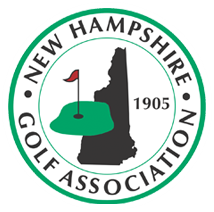Course Rating defines the USGA® mark indicating the evaluation of the playing difficulty of a course for scratch golfers under normal course and weather conditions. It is expressed as strokes taken to one decimal place, and is based on yardage and other obstacles to the extent that they affect the scoring ability of a scratch golfer. Course Rating is equivalent to the better half average of a scratch golfer’s scores under normal playing conditions. Each State/Regional Golf Association is responsible for putting together a team to rate the courses within their region--in the NHGA's case, within New Hampshire. Each course is re-rated every 10 years. The NHGA has a dedicated group of qualified course raters that rate about 10 courses each season. See below for a list of the NHGA's current course rating team. If you are interested in joining the course rating team, contact Kate Billings from the NHGA to learn how.
NHGA Course Rating Team
Allen Pattee, Bill Downall, Celeste Craig, Chris Downall, Glenn Walton, Jeff Rounsaville, John Sterling, Karen Janes, Kathy Maxwell, Lyn Howard, Max Maxwell, Pete DeMarco, Randy Emerson
If you are interested in joining the Course Rating Team, please contact Kate Billings at /course-rating.
Course Rating FAQs
What is a USGA Course Rating?
A USGA Course Rating is the USGA's mark that indicates the evaluation of the playing difficulty of a course for a scratch golfer under normal conditions based on yardage and other obstacles that affect scoring ability.
What is a Slope Rating?
A Slope Rating is a measurement of the relative difficulty of a course for players who are not scratch golfers.
How is the Slope Rating determined?
Each course is rated from each set of tees for both the scratch golfers and the bogey golfers. The USGA Course Rating and Slope Rating together reflect the difficulty of the course for a player who is not a scratch golfer. The greater the difference between the scores of the scratch and bogey golfers on a certain course, the higher the Slope Rating will be and the more strokes players will receive. Conversely, the less the difference, the lower the Slope Rating will be and the fewer strokes players will receive.
